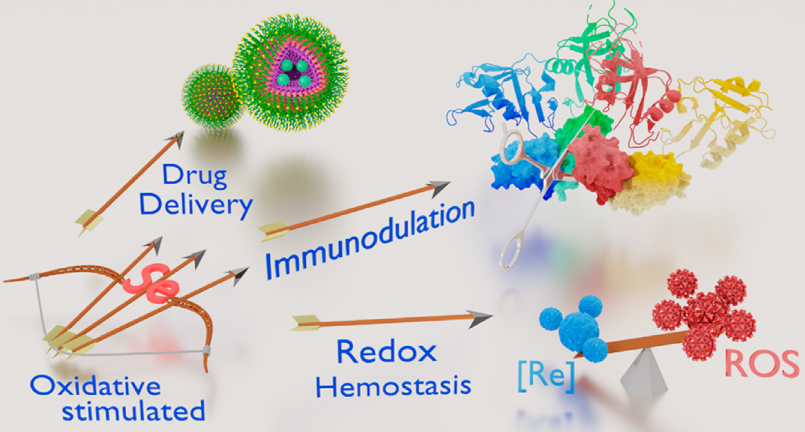Chenxing Sun, Yizheng Tan, Huaping Xu
ACS Materials Lett.; 2020, 2, 1173.
Nanomaterials are good platforms for the combination of different cancer treatments, such as radiotherapy, chemotherapy, and immunotherapy. However, those materials mostly serve as delivery vehicles for efficient and targeted transport of anticancer drugs. Stimuli-responsive chemical bonds have already been widely applied to construct these nanomaterials for controlled drug release. Diselenide bonds are one example of dual redox responsive bonds. Different from other stimuli-responsive nanomaterials, diselenide-
containing polymers can not only function as drug carriers, but also show good anticancer efficiency and immunomodulatory properties after quick and sensitive response to oxidative stimuli. Seleninic acid, the oxidation product of Se−Se bonds, can disturb the redox hemostasis and regulate protein expression in cancer cells. In this Viewpoint, we briefly introduced the significance and applications of diselenide-containing polymers in combined anticancer treatment. Furthermore, we envisioned the future challenges and directions of diselenide-containing drug delivery systems.

